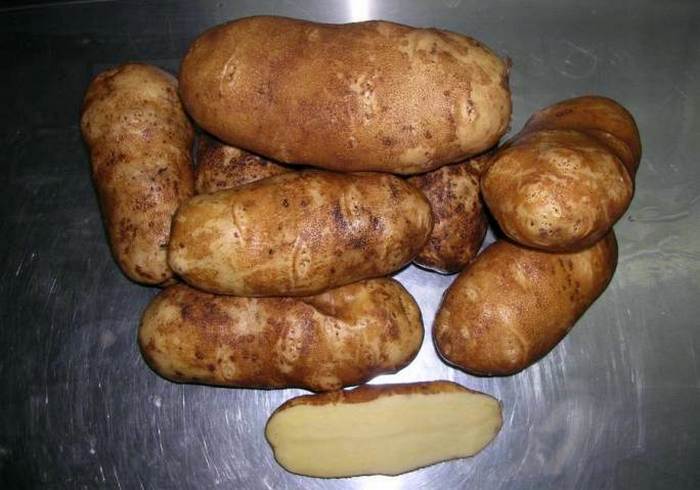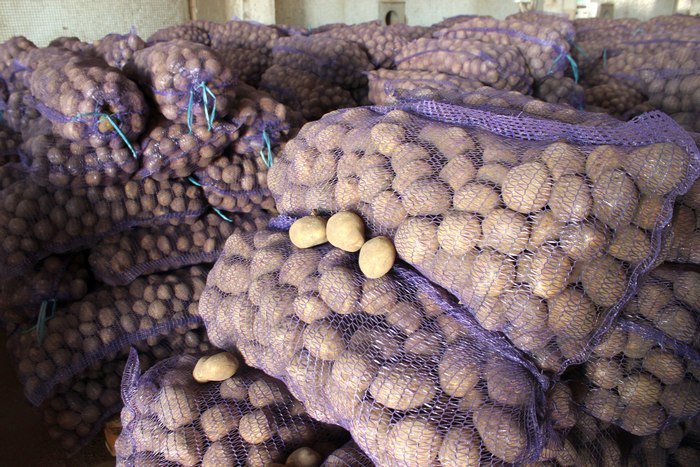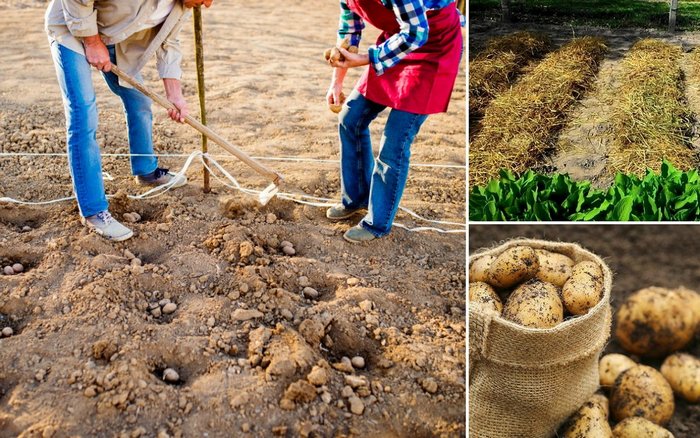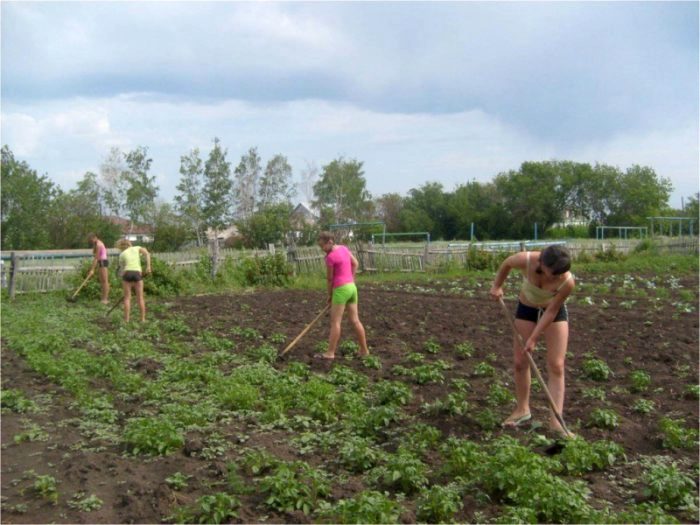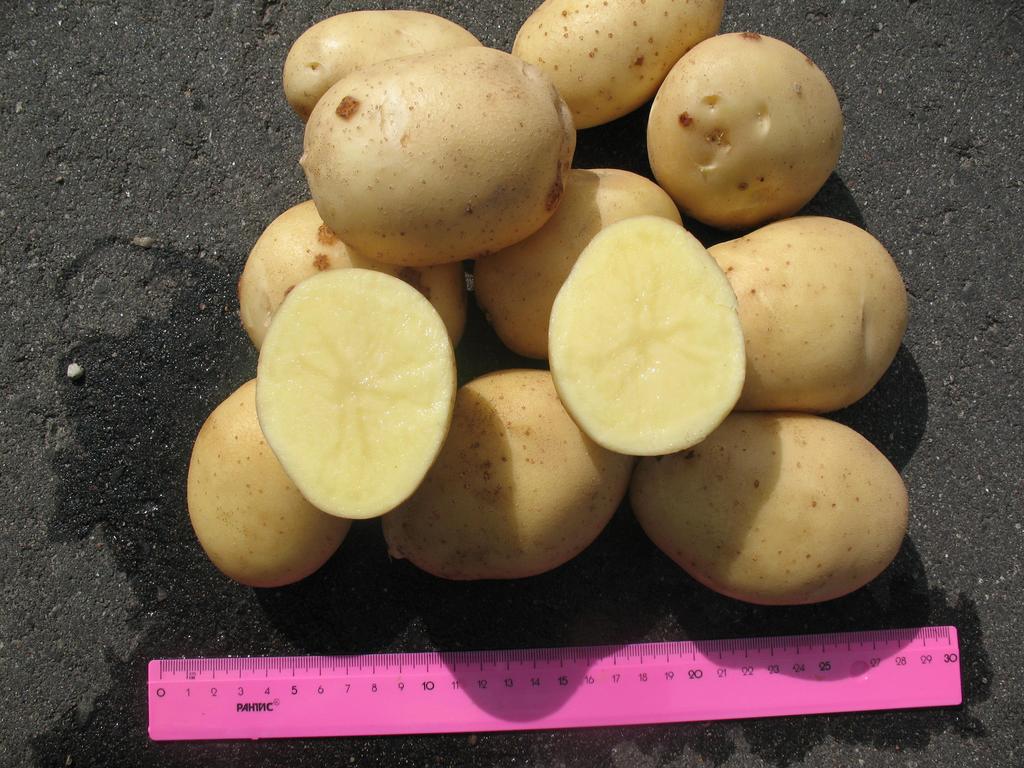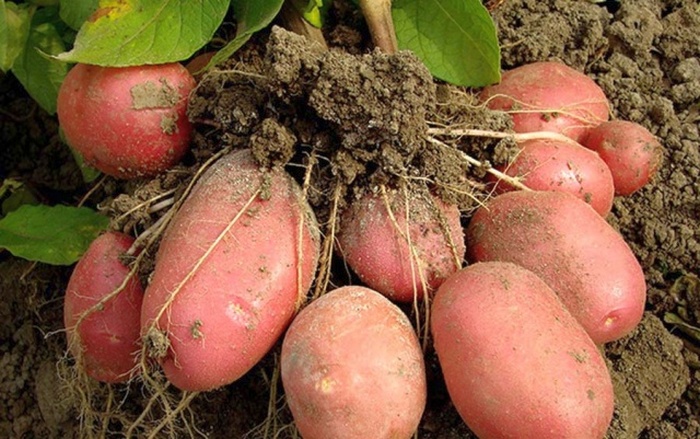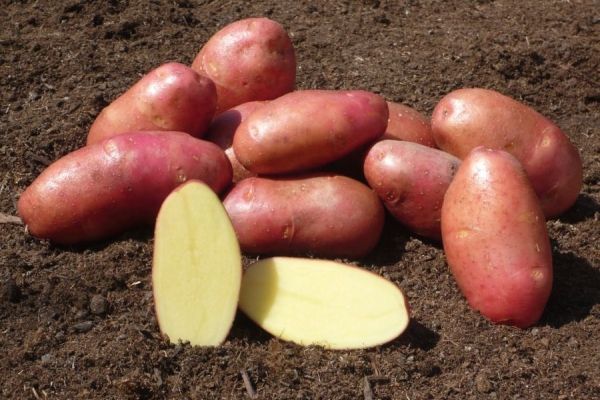Content:
A potato product with this name is considered one of the best varieties in the world, used in the preparation of French fries, as well as for heat treatment in foil. Possessing excellent characteristics, the Innovator potatoes are successfully grown both on an industrial scale and in private (farms) farms.
In this review, you can get acquainted with a detailed description of this variety, as well as with the features of its vegetation.
History
The Innovator variety was bred at the end of the last century by breeders of the Dutch company HZ PSC Holland, which occupies one of the leading positions in the world in the breeding of seed material. This company specializes in the cultivation and sale of elite varieties of potatoes in seeds and in ready-made packaged form.
Its main consumers are supermarkets, culinary centers and fast food chains focused on the production of chips and fries. Varietal potatoes are delivered to Russia in the form of elite seed material produced in the company's branch (located in the Leningrad Region).
In order to exclude the possibility of its local degeneration, as well as defeat by viral infections, only elite products of the highest grade (E-elite or A-first reproduction) are selected in the branch.
In 2002, potatoes under the name "Innovator" were included in the State Register of the Russian Federation for a number of regions, after which they successfully passed the stage of standardization in Moldova, as well as in Ukraine.
Variety characteristics
Feature of the Potato Innovator whose general characteristic is considered in this section is its consistently high yield. In this case, the ripening period of tubers is about 75-85 days. In order to better represent this type of vegetable crop, it is advisable to consider each of its agrotechnical parameters separately:
- The starch content in fruits corresponds to 15 percent.
- The mass of fully ripe tubers reaches 120-150 grams.
- Their number on each bush ranges from 6 to 11 pieces.
- The shape of the tuber can vary from oval and slightly elongated to elongated, the eyes on it are small in size.
- Its skin is slightly rough to the touch and not very hard.
The average yield of this crop can be approximately 320-330 centners per hectare. An important consumer quality of this variety is its excellent taste and not very strong spreading during the cooking process. The color of the peel of the tubers of this vegetable is creamy, the pulp has a light yellow tint.
Areas of preferred cultivation are the central and chernozem areas, including the Volga-Vyatka region. During the growing season, the Innovator potato is most often susceptible to such common diseases as the golden nematode and rhizoctonia.
Agrotechnics
Training
For planting potatoes, varietal Innovator, selected tubers that are pre-germinated in the light are used, which, moreover, have undergone additional processing with biostimulants and antiviral drugs.
In order to get an early harvest, germination should be started about 40-50 days before the tubers are planted. The procedure for this procedure is as follows:
- First, the seed tubers are laid out in boxes, in a layer about 2-3 cm thick.
- Then they are sprayed with water (this should be done at least 1-2 times a day).
- After about three weeks, culling of tubers is organized, during which only samples with already formed skin and full sprouts are left.
- They are placed in boxes with humus and peat, necessarily sprouts up.
- After that, they are sprinkled with the same mixture, then the process is repeated several times.
Disembarkation
This type of potato is preferable to plant in beds, slightly raised above the general ground level (the time for this is usually chosen in May). When planting tubers, the distance between adjacent rows should be about 70-75 cm, between tubers - from 25 to 40 cm (depending on their size).
The Innovator variety, a detailed description of which was discussed above, requires slightly acidic (neutral) soils for good germination. A good result can be obtained on sandy loam and pure sandy soils.
If necessary, it will be possible to additionally enrich them with special acid-nutritional compositions, which can be purchased at any specialized store.
Care
Traditionally, caring for potatoes comes down to the following mandatory procedures:
- Weeding and then hilling seedlings.
- Mulching and watering.
- Pesticide treatment.
Weeding and hilling works are carried out at least 3 times during the summer season. To prevent the growth of weeds, the beds are sprayed with pesticides, the first watering of the potatoes is tied to the time of the appearance of the inflorescences. The second time it is watered immediately after flowering stops. Further watering operations are organized as needed (avoiding moisture stagnation).
Advantages and disadvantages
The main property of this type of potato, which attracts most gardeners, is its high yield. This indicator tops the list of plant advantages, which should also include:
- Frost resistance and drought resistance.
- Simplicity of care.
- Unpretentiousness to the quality of the soil.
This hybrid also has disadvantages, which, first of all, include the need for selection and long-term germination of tubers. In addition, this variety is susceptible to a number of diseases, which require a lot of effort to prevent.
In conclusion, it should be noted that this type of potato is not yet widespread among Russian amateur potato growers. Although in recent years, an increasing number of companies engaged in the cultivation of this product for industrial purposes have begun to pay attention to it.
